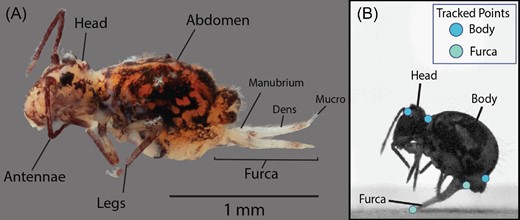2024-08-29 カリフォルニア大学バークレー校(UCB)
<関連情報>
- https://news.berkeley.edu/2024/08/29/can-fungi-turn-food-waste-into-the-next-culinary-sensation/
- https://www.nature.com/articles/s41564-024-01799-3
- https://www.sciencedirect.com/science/article/pii/S1878450X23001683
伝統的な発酵食品から得られるNeurospora intermediaが廃棄物から食品への変換を可能にする Neurospora intermedia from a traditional fermented food enables waste-to-food conversion
Vayu Maini Rekdal,José Manuel Villalobos-Escobedo,Nabila Rodriguez-Valeron,Mikel Olaizola Garcia,Diego Prado Vásquez,Alexander Rosales,Pia M. Sörensen,Edward E. K. Baidoo,Ana Calheiros de Carvalho,Robert Riley,Anna Lipzen,Guifen He,Mi Yan,Sajeet Haridas,Christopher Daum,Yuko Yoshinaga,Vivian Ng,Igor V. Grigoriev,Rasmus Munk,Christofora Hanny Wijaya,Lilis Nuraida,Isty Damayanti,Pablo Cruz-Morales & Jay. D. Keasling
Nature Microbiology Published:29 August 2024
DOI:https://doi.org/10.1038/s41564-024-01799-3

Abstract
Fungal fermentation of food and agricultural by-products holds promise for improving food sustainability and security. However, the molecular basis of fungal waste-to-food upcycling remains poorly understood. Here we use a multi-omics approach to characterize oncom, a fermented food traditionally produced from soymilk by-products in Java, Indonesia. Metagenomic sequencing of samples from small-scale producers in Western Java indicated that the fungus Neurospora intermedia dominates oncom. Further transcriptomic, metabolomic and phylogenomic analysis revealed that oncom-derived N. intermedia utilizes pectin and cellulose degradation during fermentation and belongs to a genetically distinct subpopulation associated with human-generated by-products. Finally, we found that N. intermedia grew on diverse by-products such as fruit and vegetable pomace and plant-based milk waste, did not encode mycotoxins, and could create foods that were positively perceived by consumers outside Indonesia. These results showcase the traditional significance and future potential of fungal fermentation for creating delicious and nutritious foods from readily available by-products.
研究室から食卓へ: 食用菌Neurospora intermediaを用いた発酵で美食の可能性が広がる From lab to table: Expanding gastronomic possibilities with fermentation using the edible fungus Neurospora intermedia
Vayu Maini Rekdal, Nabila Rodriguez-Valeron, Mikel Olaizola Garcia, Diego Prado Vásquez, Pia M. Sörensen, Rasmus Munk, Jay D. Keasling
International Journal of Gastronomy and Food Science Available online: 30 October 2023
DOI:https://doi.org/10.1016/j.ijgfs.2023.100826

Abstract
Fermentation is a powerful tool for enhancing flavor, improving sustainability, and expanding creative possibilities in the kitchen. However, most fermentations done in gastronomic contexts are restricted to a small set of readily available microbial species. Expanding beyond this limited biological diversity holds promise to unlock new gastronomic innovation. Here, we explore novel culinary applications of Neurospora intermedia, an edible fungus traditionally used in Java, Indonesia to produce the fermented food oncom. Our work demonstrates that N. intermedia can be readily used in the production of oncom-like meat alternatives with non-traditional substrates, as well as in the production of enzymes for starch-to-sugar conversion. As an example, we harness secreted N. intermedia starch-degrading enzymes to produce an amazake that has a distinct volatile aroma composition compared to traditional amazake produced with Aspergillus oryzae. In addition to providing texture and flavor, N. intermedia can be used to add an orange color to dishes due to the development of brightly colored spores and aerial mycelia. This property, along with its secreted enzymes, was utilized to create a dish for fine-dining restaurant Alchemist in Copenhagen, Denmark. Overall, the novel foods produced in this study were rated favorably in consumer trials, indicating a broad sensory appeal of N. intermedia across different culinary applications and cultural contexts. The protocols and approaches presented in this study represent a new addition to the chef’s toolbox that hold promise to expand gastronomic possibilities with fermentation in restaurants and beyond.


